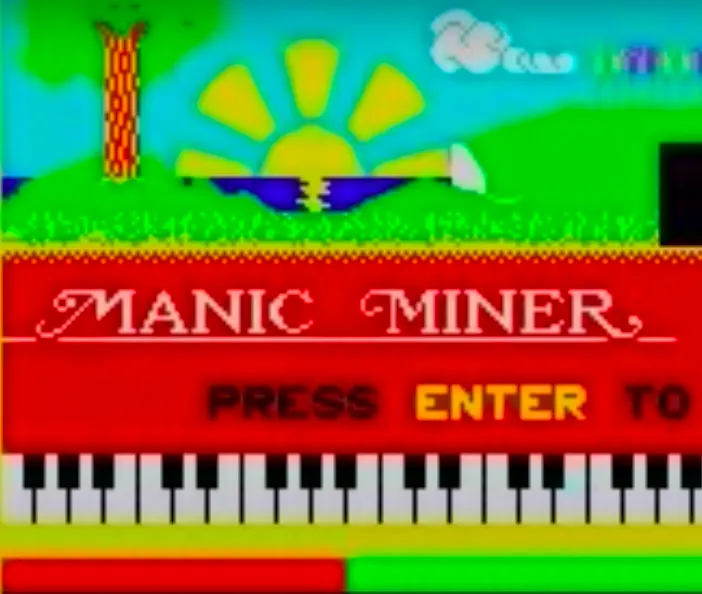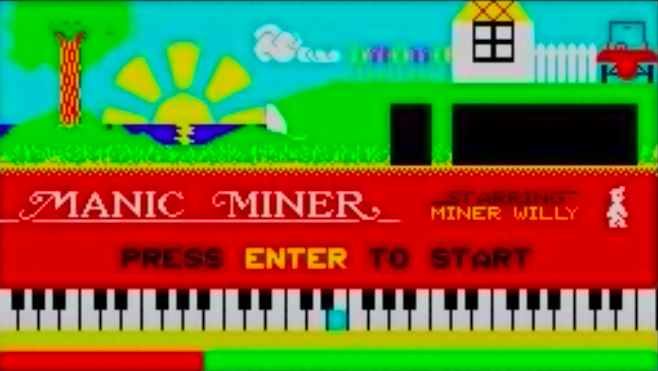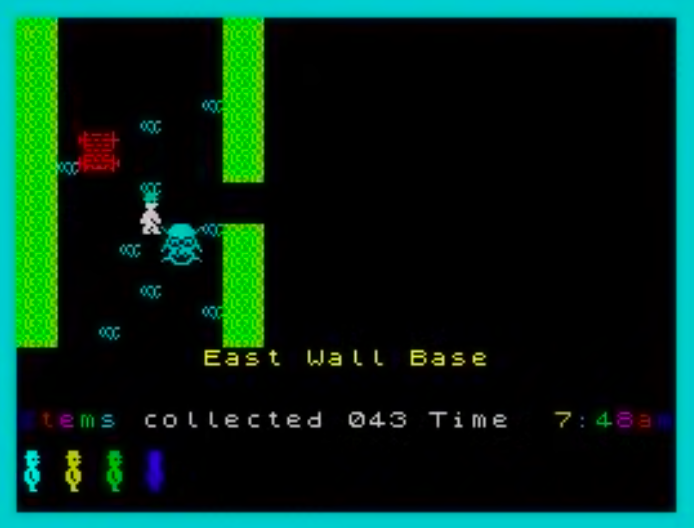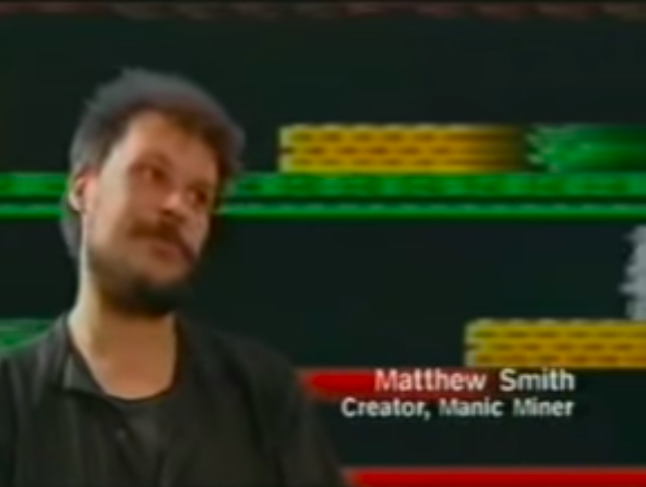He designed a cult video game, then its sequel... then he disappeared

What happened to Matthew Smith?
In the late 1990s, a website called Where is Matthew Smith? was regularly updated with posts from gaming enthusiasts all over the world. Website visitors shared one crucial mission: trying to piece together what had happened to this elusive games programmer. Of course, for non-gamers, the more pressing question would have probably been, “Who is Matthew Smith?”, since he’s hardly a household name.
Matthew was a teenage prodigy when he rose to prominence in the early 80s, as Liverpool experienced a burst of creativity not seen in the city since the heady days of Merseybeat. This time, jangling guitars were replaced by blips and beeps as the software scene began its ascendence; instead of the dank Cavern, the main players on the scene plied their trade in air-conditioned offices, a stone’s throw away from the River Mersey. A 1984 Sinclair User article went so far as to describe Liverpool as “a sort of Silicon Valley of Software projects”.

In the early 80s, many teenagers found themselves going straight from school to the dole queue. There were no easy solutions, but some of them sought an escape in the burgeoning world of computer games. In 1982, the Sinclair ZX-Spectrum was released — Scouse kids who once had to visit the arcades of nearby seaside towns to get their pixelated thrills could now play from the comfort of their own home. This, and earlier machines like the TRS-80, allowed users to not only play games but also to program their own. Chris Cannon, now a professional tour guide operating as Hidden Liverpool, belonged to a group of like-minded computer enthusiasts that spent time hanging around the Tandy Shop on Lord Street. It was here that Chris, 56, first got to know Wallasey resident, Matthew.
“There was a load of us who were interested in playing around with the electronic workings of the machines and writing stuff on them,” Chris tells me. “We all used to help each other.” He explains that Matthew was also in that group and they eventually became close friends.
Chris is a dapper gentleman these days, younger looking than his age would suggest. At 16, in the downtrodden Liverpool of the 80s, Chris earned around £12K a year, alongside regular royalty cheques for a game he had written called The Castle. He was asked if he knew any other talented programmers, he tells me, so he introduced Matthew to the owners of Bug-Byte, a video game company founded in Liverpool in 1980.
As Matthew explained in a 2005 appearance at Nottingham’s Screenplay Festival, companies like Bug-Byte and Imagine Software were quick to recognise the potential of talented young people and offices across the city were quickly filled with tech-savvy teens, tapping out the next big hit. In 1983, one of these hits, Matthew Smith’s Manic Miner, changed the gaming industry overnight. He created Manic Miner in just eight feverish weeks. It was an immediate sensation and the 17-year-old Matthew was rewarded with a life changing £30,000 payday. They were kids from ordinary backgrounds, now making far more money than their parents.


“Some of the others in the industry,” Chris says, referring to the owners of these software houses, “were obviously making a lot more.”
Manic Miner was a platform game, similar to the Mario-spawning Donkey Kong, though, according to Matthew, this was actually inspired by Miner 2049er. This was a 1982 Atari platform-game featuring a character who had to navigate his way through a series of uranium mines, battling radioactive creatures as he goes. Miner Willy, the game’s protagonist, must collect hidden treasure in underground caverns, escaping before his oxygen runs out. In a 2013 interview, Black Mirror creator Charlie Brooker ranked Manic Miner number two out of his five computer games that changed the world, calling it “a uniquely weird, idiosyncratic, British game that has lots of Python-esque humour”.
One example of this is the giant foot that descends from the top of the screen to crush Willy every time a player runs out of lives. Manic Miner was also one of the first home computer games to feature a continuous soundtrack — prior to this era, computer games never used to have music running constantly in the background, just little flourishes here and there. In the Hall of the Mountain King is Willy’s theme as he hops and jumps around the 20 screens that must be played to complete the adventure.
Chris tells me that Matthew was quite a shy teenager. A photo of him from the time shows a man who skewed goth, with Robert Smith-hair, swaddled in an oversized jumper. Expecting more and even larger sums of money to be forthcoming, Matthew began celebrating his good fortune by partying, taking many of his friends along for the ride. Unfortunately, as Matthew explained at Screenplay Festival in 2005, Bug-Byte was slow to issue further royalty cheques and he grew impatient, leaving the company to start his own firm, Software Projects. It was there that Matthew created his magnum opus, Jet Set Willy.

In much the same way that Brian Wilson of The Beach Boys never fully recovered from the strain of recording Pet Sounds and its aborted follow-up, Smile, the pressure to complete Jet Set Willy seems to have broken Matthew. Manic Miner took eight weeks to complete, but its sequel took eight gruelling months. When Matthew wasn’t staring at a computer screen, he was letting off steam. As he told computer magazine Sinclair User, he spent his time “partying, getting drunk and falling over a lot”, once hitting the clubs of Liverpool clad in a Roman toga.
Obviously anybody writing anonymously online can make wild claims minus consequences, so it’s recommended you take the following allegations with the requisite pinch of salt. Contributors to the Where is Matthew Smith? website allege there was a period of debauchery, and claim that his Wallasey residence became an “open-house” where many hangers on would booze for free, smoking weed and drinking “mushroom tea”. There are some on the site who say his generosity was taken advantage of. Others wondered if he spiralled into a self-destructive period.
When I ask Chris how Matthew went off the rails, he tells me: “He was being pushed hard by his business partners to complete Jet Set Willy and it effectively broke him. He started distancing himself from work and his friends. If it were now, I’m sure the signs of depression would be recognised, but back then…not so much.”
The idea of a great artist going off the rails at the height of his creative powers is a perennial. At almost the same time as some speculated that Matthew’s success was starting to show cracks, local legend Lee Mavers of The La’s was obsessing over the recording of an album that, to this day, he claims has never been completed. It’s hard not to wonder how many great works of art — rendered in pixel or paint — have been lost to us by an uneasy period in a person’s life.


Jet Set Willy was finally released in 1984. The plot of the game, if you believe the stories on Where is Matthew Smith?, could be semi-autobiographical. Miner Willy, now extremely wealthy after his last adventure, holds a massive and destructive party in his new mansion to celebrate. Willy’s housekeeper won’t let him go to bed until he’s tidied up his mess, which is basically the object of the game. Smith populates the game with ballet dancing gerbils, grotesque faces and sinister mini-chefs. Like Manic Miner, the game was an instant hit, and a follow-up was expected almost immediately. This follow-up never arrived.
Matthew Smith retreated from the limelight but was often rumoured to be on the verge of completing a new masterpiece. He was involved in a few minor works over the next few years, but by the end of the 80s had almost completely disappeared. It is this period in his life that fostered much of the legend surrounding him. At one point there were even claims that Matthew Smith didn’t really exist but had been a code name for the TRS-80 that Manic Miner was written on. Some people said he was in the Netherlands, working in a fish factory. Around this time, Chris says he saw Matt driving “an old bicycle with a vacuum cleaner motor and car battery fixed onto it” on the Wirral.
The entire truth is difficult to piece together — especially given the fact I couldn’t find any way to reach out to Matthew to get his take on things — but in the early noughties, spurred on by the interest being shown in his story, Matthew began to make intermittent appearances. In one interview, for video-game TV programme, Thumb Candy, he shed some light on things, but not much.
On Thumb Candy, Matthew is well-spoken but appears nervous and slightly manic. He is unkempt, sitting in what is presumably his bedroom, being interviewed by now-forgotten host, Ian Lee. Clothes are strewn around the floor, and the bed is unmade. Perhaps it isn’t really his house; maybe it’s a set designed to look like a typical teenage bedroom. If this is the case, it isn’t made obvious. The interview steers away from his rumoured rock’n’roll lifestyle, but Smith does confirm that he lived in the Netherlands in the mid-90s, in a commune. Matthew ends the interview by saying, “five years after I did it (Manic Miner) I was a washout; ten years after I was history…it’s coming up to twenty years now and I’m a legend.”
Looking back through the Where is Matthew Smith? website (still archived online), if you push through the rumour mongering, the deep warmth its users feel toward Matthew is palpable. That seems to extend to the sentiments surrounding Matthew in the offline world, too. Early on in my interview with Chris, he tells me: “We’re all very protective over Matt, so you’ll not get anything meaty.” When I ask where Matthew is now, he tells me he doesn’t know, and if he did, he’s not sure he’d actually tell me.

The legacy of Matthew Smith doesn’t just resonate in the world of gaming. In 2014, psychedelic rockers, The Heyze, wrote an entire concept album about the creation of Manic Miner and Jet Set Willy. The album is almost as elusive as Matthew Smith himself, though their song, Matthew Smith, is still available on Youtube. The 2018 Black Mirror episode, Bandersnatch, written by Manic Minor enthusiast, Charlie Brooker, is the tale of an 80s computer programmer in the grip of a mental breakdown, trying desperately to complete a promised masterpiece. In 2019, to celebrate 35 years of Jet Set Willy, an Italian filmmaker, Paolo Santagostino, produced Willy, 48K About a Legend.
In the same year, Paolo was joined by Matthew Smith at a panel for PLAY Expo, in Manchester. Although Matthew had obviously agreed to be there, he seemed reluctant to discuss his past, going as far as to say: “I’ve been recommended by my therapist that I don’t talk about that period of my life.”
Matthew has disappeared, reappeared and stepped back out of the spotlight again. I’m still hoping that one day, he’ll be back on the scene, creating new games. Admittedly, this seems like an unlikely ending to this story, though.
The games industry that he was a part of is still flourishing in Liverpool, with Sony having a major presence in the city. But it’s important to acknowledge the pioneers as well as the multimillionaires: the guys from the Tandy shop on Lord Street, who broke ground in an industry that was still in its infancy. Best-selling and still ranking high in lists of top games of all time, Manic Miner was and is a superstar — just like Matthew himself, wherever he is.

Comments
Latest
Michael Heseltine 'saved' Liverpool. Didn't he?
Cheers to 2025
Searching for enlightenment in Skelmersdale
I’m calling a truce. It’s time to stop the flouncing
He designed a cult video game, then its sequel... then he disappeared
What happened to Matthew Smith?